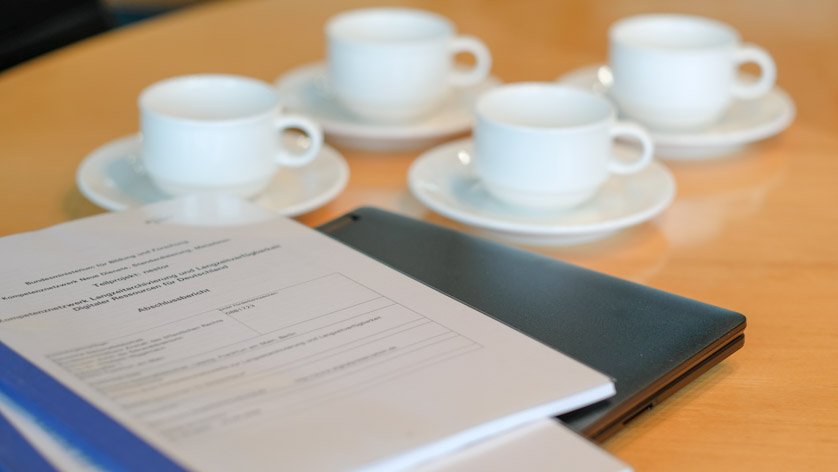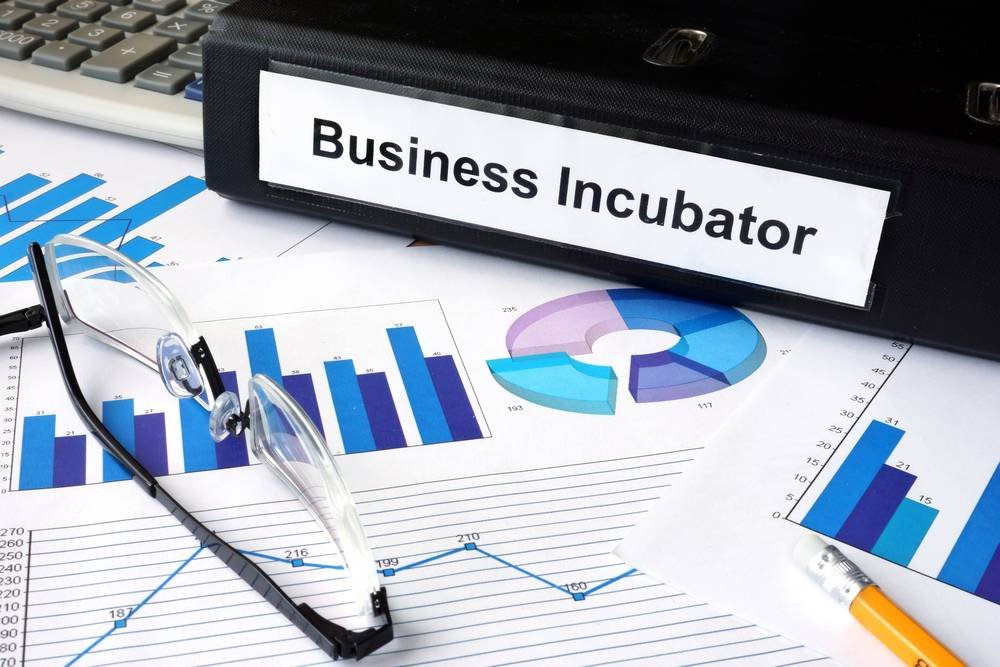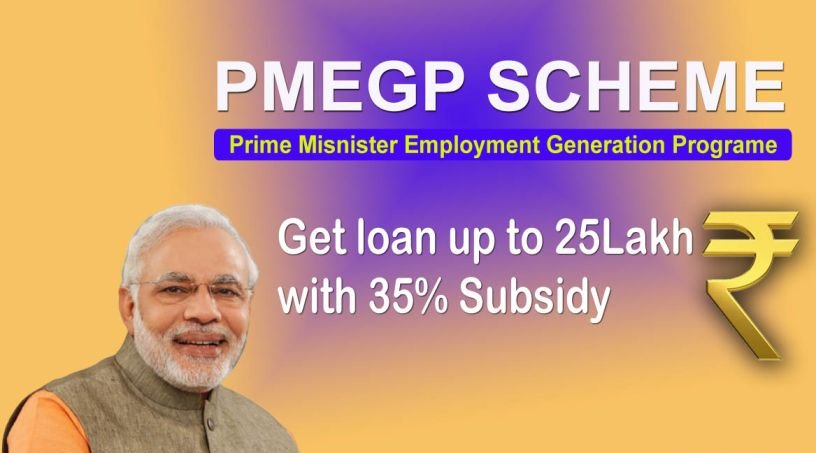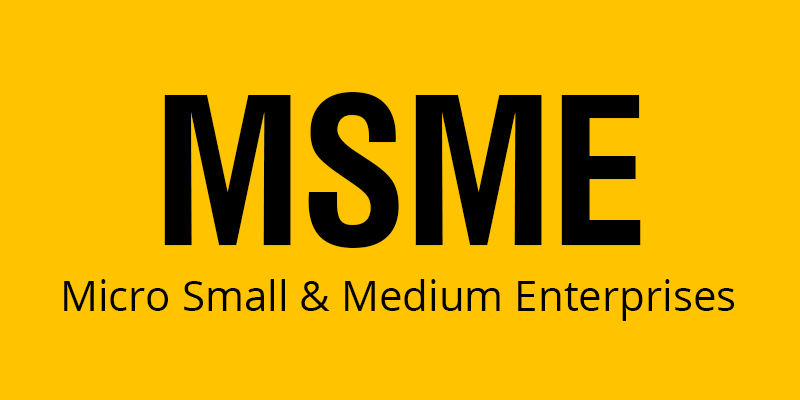What is a Project Report
For taking a business loan from the bank for a new start-up business, the borrower must represent the project report of their business. All the necessary requirements and official documents have to be submitted with the project report. The project report should be such that it should represent the idea of the whole business and can be easily understood by the reader.
Elements of Project Report
Let’s discuss the standard format for the project report for bank loans of new businesses.
Introductory page
- On this page, the introduction of your new business is to be given
- The aim of the business and on what purpose you have chosen this business all these points should be mentioned in this introductory part
Summary of the project
- Summary of the project should consist of the overall status of the business
- Time to be consumed in working or manufacturing something should be there
- The budget of the whole business should also be mentioned
Scope of the project
- Scope of your business should be clearly described
- It should contain the percentage of work that you planned and the percentage of planned work that has already been completed
- Quick overview of results and planning of next steps should be included
Details of Promoters
- The promoters are the mediator for the business which helps for the promotion of the business
- The details of the promoters and their educational qualifications and work experiences etc. should also be given in the report
Details of Employees
- The details about the employees working this business should be written
- Their educational qualifications should also be mentioned
- The work experiences and details about the top management should also be written
Infrastructure Facilities
- Information about infrastructure facilities should also be mentioned like whether the tools have been deployed or not
- Also, write about the conditions of the operational premises and what all are used
- Types of machinery used in the business should also be mentioned
Customer Details
- Information about customers should be well written like, what are the types of customers you have targeted for selling your business items
- The prospective customer’s details should also be mentioned like is they from the big organization and also what is their capacity of buying goods in this business
Regional Operations
- Many times a company opens branches in different areas or regions. The branches may be set up nationally and internationally, as per the requirements
- When you make a project report you have to write about the different setups you made in which region and also write about the operation teams
Fiscal Acquisitions and Tie-ups
- You have to write it down in the project report with whom you have done tie-up or which stock or acquisition you have taken and all details of it should be mentioned in the report
Means of Financing
- The financing in the business can be done by the financial corporation or the business partners or somewhere else
- So, it is very important that from where the funding is coming, so this all should be mentioned in the report
Balance Sheets
- Balance sheets tell about where the money has been spent
- Also in what areas and fields the spending has been done is also noted. Thus all the accounts of the business will be seen in this balance sheet
- It is important to show the balance sheets of your company to the bank and it should also be mentioned in the report
Profit and Loss Statements
- How much the profit will company make and how much profit is making the business has to be in the report
- Whether the business is making any profit or loss the statements should be shown to the bank and also being mentioned in the report
Fund Flow Statement
- The funding given by any corporate or government and where it is used and in what fields of business the funding is flowing should be mentioned in the project report
Break-Even Points Evaluations
- Give the evaluations of the whole project report in even points and mention everything about your whole business
- Project Feasibility Ratio: Deciding on the ratio of cost, discounts, and revenue
Project Feasibility Ratio
Project Feasibility Ratio is basically deciding on the ratio of cost, discounts, and revenue of an enterprise. It can be presented in the form of a graph by mentioning the year-on-year comparison between revenue and expense. The project report should also contain the expense split-up graph.
The components of Project Feasibility Ratio are below mentioned that are required to be displayed as per year-on-year comparison:
- Current ratio
- Quick ratio
- Interest coverage ratio
- Debt equity ratio
- Gross profit Sales Percentage
- Net profit Sales Percentage
- Return On Capital Employed
Scope of the project
The scope of the project should have below mentioned details:
- Promoter(s) details
- Product / services & process
- Plant & machinery / equipment
- Market potential & Strategy
- Manpower requirements
- Risks & Mitigation strategy
FAQs
Ques. Is it necessary to make a project report for a bank loan?
Ans. The project report is very much necessary when you’re going to take a business loan for your business.
Ques. What are the necessary contents used in the project report?
Ans. The necessary contents preparing in project reports are:
- Introductory page
- Summary
- Details about the promoters
- Details of employees
- Details about Infrastructure
- Details about customer
- Regional operations
- Fiscal acquisitions and tie-ups
- Means of financing
- Balance sheet
- Profit and loss statements
- Fund flow statements
- Break-even point evaluations
- Conclusion

Project Report (contd..)
SIDBI on its Portal Udyami Mitra, has hosted several Project Reports for the information and reference of prospective entrepreneurs. You can visit https://udyamimitra.in/page/project-reports to read those project reports.

Sample Project Reports
A entrepreneur requires to prepare Project Reports to study the viability, sustainability of his / her business. We are providing below sample Project Reports, which you can use as a reference point for preparation of your Sample Project Report.
Click here to View Sample Project Report

Entrepreneurial and Managerial Development of SMEs through Incubators
Objective
New Enterprise Creation
Key Benefits
Funding support up to Rs. 15 lakhs for development of innovative ideas in to commercial products
Seed funding support up to Rs. 100 lakhs for setting up new units for commercialization of successful innovative ideas
Scheme applicable for
Existing Entrepreneurs/Aspiring Entrepreneurs
Detailed Information
The main objective of the scheme is to promote & support untapped creativity of
individual and to promote adoption of latest technologies in manufacturing as well as
Knowledge based innovative MSMEs (ventures) that seek the validation of their ideas at the proof of concept level. The scheme also supports engagement with Enablers who will advise such MSMEs in expanding the business by supporting them in design, strategy and execution. The Enablers will play a pivotal role and would be integral part of the business development.How to apply : Click Here

Procurement & Marketing Scheme
Objective
Marketing Support
Key Benefits
Participation of Individual MSEs in domestic Trade Fair/ Exhibition
Capacity building of MSMEs in Modern Packaging Technique / Development of Marketing Haats.
Organizing Domestic Trade Fair& Exhibition/ Vendor Development Programs/ National & International Workshops & Seminars/ Awareness programs
Scheme applicable for
Existing Entrepreneurs
Detailed Information
Participation of individual MSEs in domestic trade fairs/ exhibitions across the country: Maximum Budgetary support (space rent and contingency) upto Rs.1.5 Lakhs max.for Metro & A class citers. Rs 1.0 lakhs max. for Class B cities / NER/J&K/ Hilly States and for other cities Rs.0.80 lakhs max.
Organizing Domestic Trade Fairs/ Exhibition and participation in trade fairs/exhibitions by the Ministry/Office of DC (MSME)/Government organizations:
Maximum Budgetary support for space rent and advt. & publicity for the event is as follows,
a. Regional :(State/District): Rs.30.00 Lakh max.
b. National: Rs.40.00 Lakh .max.
c. International: As decided by Empowered Committee subject to approval of Deptt. Of Expenditure.
Capacity building of MSMEs in modern packaging technique: Maximum Budgetary support of Rs.1.0 lakh max. for ordinary packaging consultancy and Rs.1.5 lakh max. for green packaging consultancy for MSME unit.
Development of Marketing Haats. Maximum Budgetary support: For Development of new MSME Haats, upper limit of GIA will not exceed Rs. 50 lakh max.
For Renovation/up-gradation of existing Marketing Haats, upper limit of GIA will not exceed Rs.20 lakhs max.
Vendor Development Programmes: Maximum Budgetary support is as follows; State Level Vendor Development Programme (SLVDP): Rs. 1 Lakh max. (One day) National Level Vendor Development Programme (NLVDP): Rs. 10 lakhs max. for A class city and Rs.7.0 lakh max. for other cities. (2-3 days)
International/National Workshops/Seminars.: Maximum Budgetary Support would be Rs 5.0 lakh maximum or actual whichever is less and for National Workshop/Seminar and Rs 7.5 Lakh maximum or actual whichever is less for International Workshop/Seminar
Awareness Programs: Maximum Budgetary support of Rs. 70,000/- max. per program (One day)
How to apply Click Here

2nd Loan for up-gradation of the existing PMEGP/MUDRA units
Objective
Technology up-gradation and expansion of existing units through credit support
Key Benefits
To fulfill the need of additional financial assistance for upgradation and expansion of successful/well performing existing units
Maximum subsidy would be 15% of the project cost (20% for NER and Hill States). The balance amount of the total project cost is provided by Banks as term loan.
Scheme applicable for
Existing well performing PMEGP/MUDRA units
Detailed Information
Further financial assistance scheme for expansion/upgrade the existing PMEGP/MUDRA units for manufacturing and Service/Trading units from the year 2018-19
The maximum cost of the project under manufacturing sector for up-gradation is Rs.1.00 crore and Rs.25.00 lakh under Service/Trading sector.
Maximum subsidy would be 15% of the project cost (20% for NER and Hill States) i.e. Rs. 15.00 lakh in Non-NER and Rs. 20.00 Lakh for NER and Hill States. The balance amount of the total project cost are provided by Banks as term loan.
All existing units financed under PMEGP/MUDRA schemes running successfully whose Margin Money claim has been adjusted and the First loan (only CE) availed should have been repaid in stipulated time and WC may be exempted.
The units should have been making profit for the last three years.
Beneficiary may apply to the same financing bank, which sanctioned the loan for their unit, or to any other financing bank, which is willing to extend credit facility for second loan.
The beneficiary can choose any implementing agency and that may be different from the agency chosen for 1st loan.
Registration of Udyog Aadhar Memorandum (UAM) is mandatory.
The 2nd loan should lead to additional employment generation.
On PMEGP e-Portal, a separate application link provided to submit the application under 2nd loan for up-gradation.
How to apply Click Here

Credit Guarantee on Loans to Micro and Small Enterprises and New Entrepreneurs
Eligibility & Conditions:
Existing Micro, small and service Entrepreneurs & Aspiring Entrepreneur all are eligible
Nature of Scheme:
The scheme is implemented by Credit Guarantee Trust for MSE (CGTMSE);
Credit guarantee for loans upto Rs. 2.00 crore, without collateral and third party guarantee;
Guarantee coverage ranges from 85% (Micro Enterprise up to Rs 5 lakh) to 75% (others);
Recently, guarantee coverage made eligible to select NBFCs and Small Finance banks;
The extent of guarantee cover is 50% of the sanctioned amount of the credit facility for credit from
Rs. 10 lakh to Rs. 100 lakhs per MSE borrower for retail trade activity.
The extent of guarantee cover is 80% for (i) Micro and Small Enterprises operated and/or owned by women; and (ii) all credits/loans in the North East Region (NER) for credit facilities upto Rs. 50 lakh.
In case of default, CGTMSE settles the claim with the lending institutions.
Steps for Availing the Assistance:
Apply through Member Lending Institutions (MLIs- Banks and NBFCs).
List of MLIs are available at http://www.cgtmse.in

Udyam Registration replaces Udyog Aadhaar
A micro, small and medium enterprise (MSME) will now be known as Udyam as per the notification issued by the Ministry of MSME on 26 June 2020. The ministry has also come up with detailed criteria for the classification of MSMEs and the procedure for registration and the arrangements made by the ministry for facilitation in this process. The notification clarified that exports of goods or services or both shall be excluded while calculating the turnover of any enterprise whether micro, small or medium. It further stated that the registration process will be known as Udyam Registration. The MSME Ministry notified that Udyam Registration can be filed online based on self-declaration with no requirement to upload documents, papers, certificates or proof. An enterprise can be registered just on the basis of Aadhaar number.
The new online registration will be made available from 1 July 2020 at http://www.udyamregistration.gov.in.
Classification of enterprises
An enterprise shall be classified as a micro, small or medium enterprise on the basis of the following criteria, namely –
a micro-enterprise, where the investment in plant and machinery or equipment does not exceed one crore rupees and turnover does not exceed five crore rupees;
a small enterprise, where the investment in plant and machinery or equipment does not exceed ten crore rupees and turnover does not exceed fifty crore rupees; and
a medium enterprise, where the investment in plant and machinery or equipment does not exceed fifty crore rupees and turnover does not exceed two hundred and fifty crore rupees.
Becoming a micro, small or medium enterprise –
Any person who intends to establish a micro, small or medium enterprise may file Udyam Registration online in the Udyam Registration portal, based on self-declaration with no requirement to upload documents, papers, certificates or proof.
On registration, an enterprise (referred to as – Udyam in the Udyam Registration portal) will be assigned a permanent identification number to be known as – Udyam Registration Number.
An e-certificate, namely, – Udyam Registration Certificate shall be issued on completion of the registration process.
Composite criteria of investment and turnover for classification –
A composite criterion of investment and turnover shall apply for classification of an enterprise as micro, small, or medium.
If an enterprise crosses the ceiling limits specified for its present category in either of the two criteria of investment or turnover, it will cease to exist in that category and be placed in the next higher category but no enterprise shall be placed in the lower category unless it goes below the ceiling limits specified for its present category in both the criteria of investment as well as turnover.
All units with Goods and Services Tax Identification Number (GSTIN) listed against the same Permanent Account Number (PAN) shall be collectively treated as one enterprise and the turnover and investment figures for all of such entities shall be seen together and only the aggregate values will be considered for deciding the category as micro, small or medium enterprise
Calculation of investment in plant and machinery or equipment –
The calculation of investment in plant and machinery or equipment will be linked to the Income Tax Return (ITR) of the previous years filed under the Income Tax Act, 1961.
In case of a new enterprise, where no prior ITR is available, the investment will be based on self-declaration of the promoter of the enterprise and such relaxation shall end after the 31st March of the financial year in which it files its first ITR.
The expression ―plant and machinery or equipment‖ of the enterprise, shall have the same meaning as assigned to the plant and machinery in the Income Tax Rules, 1962 framed under the Income Tax Act, 1961 and shall include all tangible assets (other than land and building, furniture and fittings).
The purchase (invoice) value of a plant and machinery or equipment, whether purchased first hand or second hand, shall be taken into account excluding Goods and Services Tax (GST), on self-disclosure basis, if the enterprise is a new one without any ITR.
The cost of certain items specified in the Explanation I to sub-section (1) of section 7 of the Act shall be excluded from the calculation of the amount of investment in plant and machinery.
Calculation of turnover
Exports of goods or services or both shall be excluded while calculating the turnover of any enterprise whether micro, small or medium, for the purposes of classification.
Information as regards turnover and export turnover for an enterprise shall be linked to the Income Tax Act or the Central Goods and Services Act (CGST Act) and the GSTIN.
The turnover related figures of such enterprise which do not have PAN will be considered on self-declaration basis for a period up to 31st March 2021 and thereafter, PAN and GSTIN shall be mandatory.

Revised Classification of MSMEs


SFURTI Scheme
OBJECTIVES OF SFURTI SCHEME
The objectives of the Scheme are as follows:
i. To organize the traditional industries and artisans into clusters to make them competitive and provide support for their long term sustainability and economy of scale;
ii. To provide sustained employment for traditional industry artisans and rural entrepreneurs;
Detailed Guidelines : Click here
